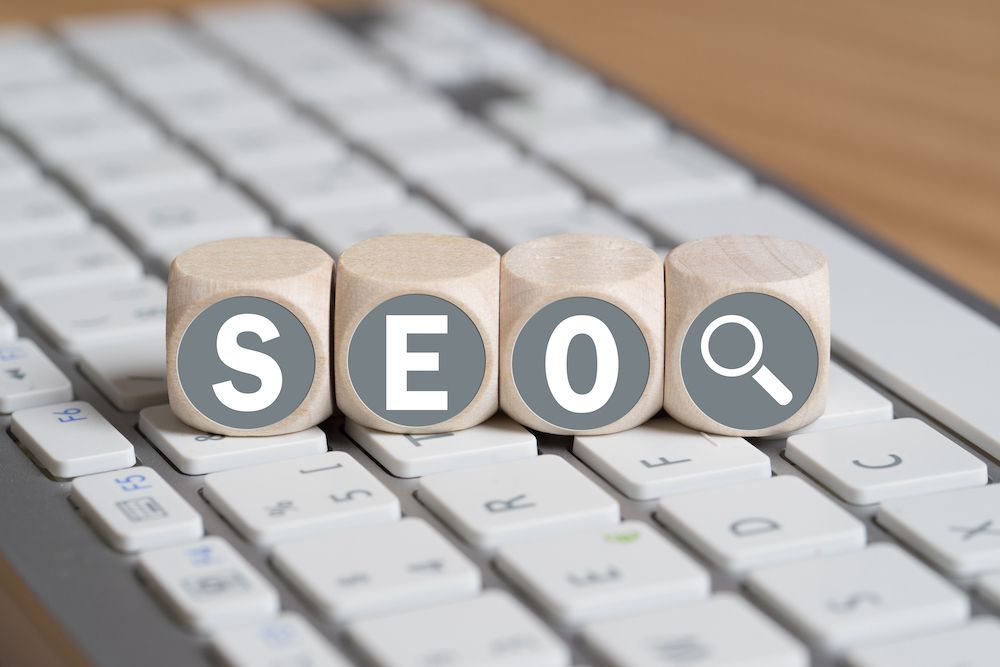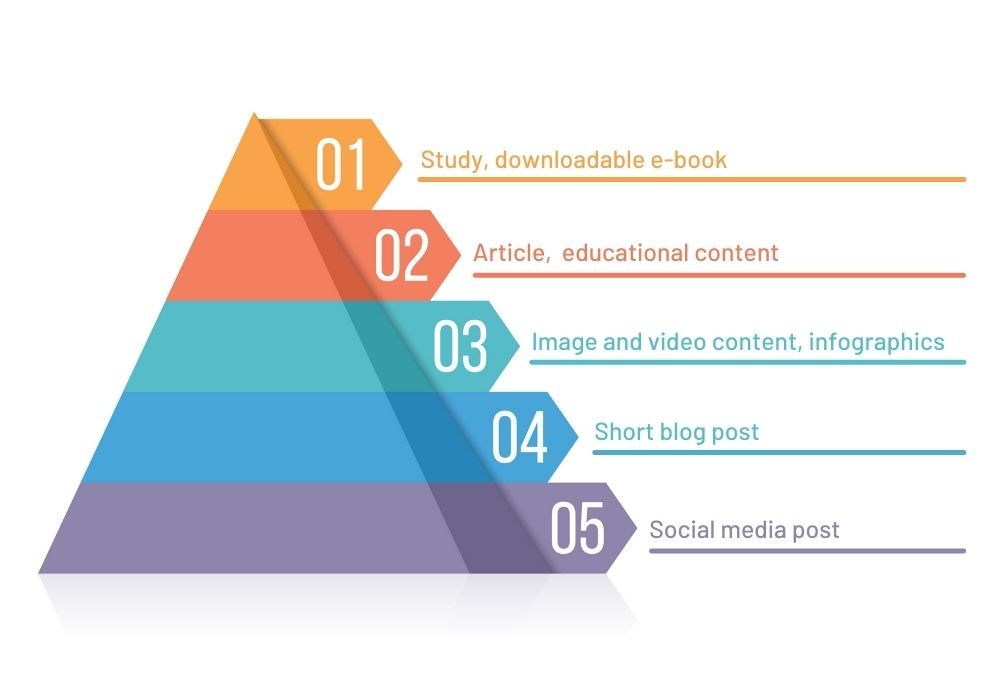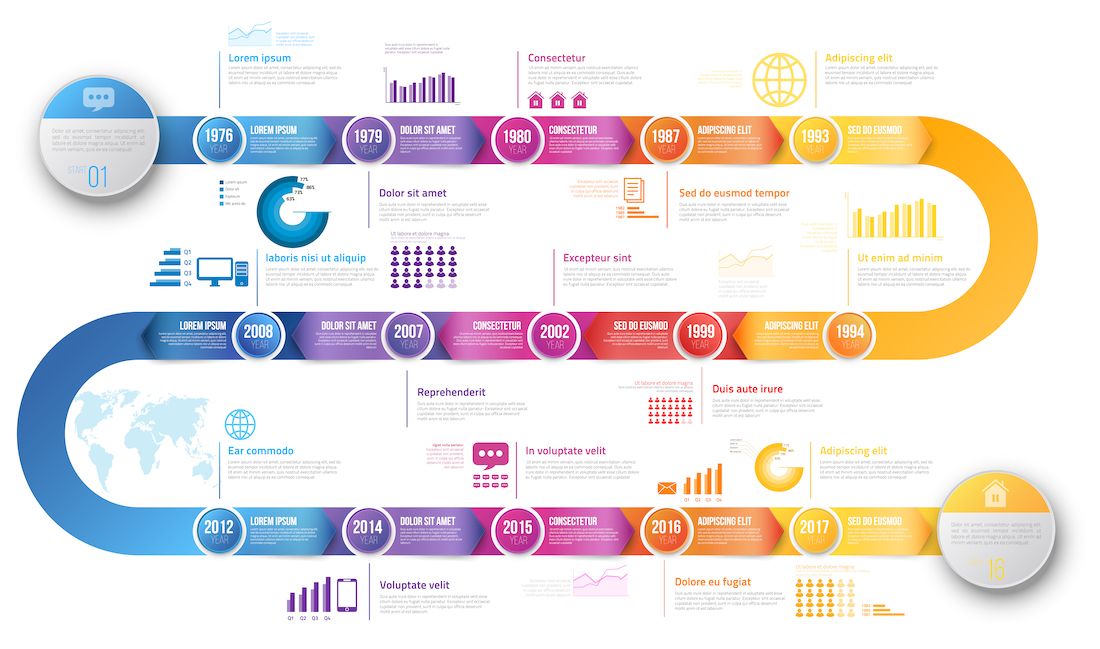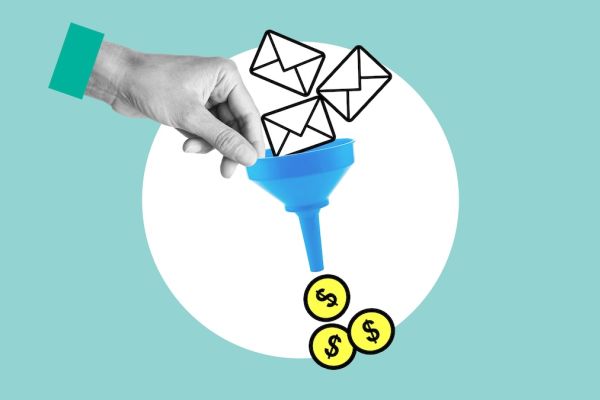Content marketing
Content marketing is all about increasing your company's visibility and professional prestige through engaging, entertaining, informative and innovative content. This will build trust, making your brand attractive and credible in a competitive marketplace. All this requires a deliberate building process. It is an investment that pays off in the medium and long term and works as an integral part of your overall marketing strategy.
What is content marketing for?
Digital content marketing and content delivery has a broad follower base, with popularity reaching unprecedented heights in the wake of the pandemic. . A good content provider is like a good friend. It gives selflessly informs, entertains, and educates you. In other words, they "add to you" rather than take. This article will focus on the principles behind this now indispensable marketing element and how you can use it to promote your brand.
Initially, people were more passive recipients of advertising. It was practically impossible to avoid TV ads, radio spots or even ads at bus stops. But in the online space, it is easy to navigate away from unsolicited advertising. And, we usually do - just think of the adblocker applications that almost all of us have installed. What is the solution to avoid consumer rejection? We need to make the content attractive, i.e. make sure that advertising is no longer unsolicited!
Today, we consume a lot of branded digital content on Instagram, Snapchat, TikTok, Facebook or Twitter that is clearly backed by a company or one of its products. But because the material we create and share is useful, valuable or downright entertaining for us, we are not at all opposed to consuming it. In fact, the more we encounter such content about a company, the more legitimate their brand becomes. When the need arises for us to buy a product ourselves, we will choose and ultimately decide based on our previous positive experiences.
So we, as consumers, will most likely refer back to brands that have made a good impression, whose expertise, competence and selfless commitment to the subject have already been demonstrated. When the content you produce and share is not overtly about you and selling your product, but about a solution to a problem, you reinforce the perception that your only goal is not to make a profit, but rather it is to share your passion. And this message is what sets you apart from the competition.
The essence of content marketing: brand building
Content marketing is all about brand building to make yourself valuable and likeable. The idea is to build your company's prestige by presenting yourself as a competent player that solves your target market’s problem. If you give prospective clients the feeling that you give without interest instead of charging for everything, then you have a winning case.
At Meraki, we help you make your brand authentic, known, loved and therefore sellable. This requires you to go beyond promises and actually deliver something interesting and valuable to your audience.
The essence of content marketing is to make yourself likeable to your target market, which includes potential and existing customers. And once you’ve attracted customers to your product or service, we help you keep them there by building trust in and loyalty to your brand.
How and what content marketing works
The overall goal of content marketing is that once you regularly produce high-quality and consistent content, you don’t have to chase customers down, they organically find you. Like all marketing activities, content marketing aims to increase sales. However, brand building is a more covert way of promoting sales than using traditional marketing tools. You could say that it encourages sales without literally encouraging purchases.
Marketing funnel in 3 steps
Attract attention (TOFU: Top of the Funnel)
Attract attention (MOFU: Middle of the Funnel)
Decision Support (BOFU: Bottom of the Funnel)
Content marketing and SEO
SEO means Search Engine Optimization. Once upon a time, people viewed SEO as a passing fad that wasted time, effort and money. It was during this time that people thought that SEO copywriting (at that time, it was really limited to copywriting) was a formality that imposed itself on content and stifled it. Fortunately, we’ve overcome that belief.Search engines have improved over the years to such an extent that they can effectively fulfil their original function: to select and deliver the highest quality content to users at the top of the organic search results list.
After all, Google itself is a product that has become the search engine market leader, amongst other things, because it allows us to find useful and relevant information in a quick, clear and organized way with as little effort as possible for any given keyword. We all want to be offered better and better content, i.e. valuable knowledge and information, on a platter. That's what SEO is all about. And it works well and effectively: the top 4-5 positions in the search results list usually contain the most relevant material on the topic in question.
In effect, compliance with search engines puts the way we communicate into the structure by which we humans review, understand and decode content, often only a few seconds in advance. This is about the amount of time we have to attract the webpage visitor (ideally a target customer) who will usually first assess the offer, quasi-integrated into our content, and then quickly decide whether it is worth consuming it in its entirety or whether it would be more appropriate to look for another dish, in case the offer is more substantial elsewhere.
If we can meet SEO requirements, users are more likely to describe the content we share as useful, transparent, well-organized and easy to consume. SEO helps us to become a content delivery platform that is worth returning to and spending time on. Then, our content is deemed important to the consumer. Quality content production and SEO are therefore not only technically linked, but also in fact, i.e. in essence.
How to create effective content
1. DEFINE YOUR TARGET GROUP AND TAILOR YOUR STRATEGY TO THEM
2. CONDUCT A THOROUGH COMPETITOR ANALYSIS, KEYWORD RESEARCH
Find out which competing companies' content sells. Create the equivalent, your own version. Identify the gaps in the market: if there is a topic or issue that many people are looking for but your competitors have not addressed much, develop it yourself. Create niche content!
3. CREATE A CONTENT CALENDAR
4. DON'T JUST TEXT: EXPAND YOUR CONTENT PALETTE
In the beginning of the online marketing era, only textual content could generate organic traffic, so the inherent added value of content used to be just manifested in copy. However, with the rapid development of search engines, so did the marketing content palette. Today we use not only textual content, but also multimedia content, videos, podcasts, images, to drive web traffic and higher search ranking, thus contributing to higher conversion rates and, thus, to sales.
Whatever media for you use depends partly on your target group and partly on the subject you are working on. For example, if visuals are a key element, or explaning a particular process is important, a well-narrated video can be much more effective than complex written content. Another example: If you have a lot of data or research to present, use infographics.
As can be seen from the graph above, relatively large written material is still at the top of the content production food chain, whether it is a downloadable e-book or so-called supported content. Nevertheless, it is very important to bear in mind that long-form, free flowing text is almost exclusively used in writing fiction. This sort of content is not favored by your audience or search engines. Typically, we complement your message with graphics, photos, videos, links that integrate with the content to design easily consumable content that plays the search engine’s game.
5. BUSINESS NEWS, UPDATES: BECOME A MAJOR PLAYER
6. REACT QUICKLY
Pay attention to what's happening in the world and in your immediate environment. If you come across news that effects or is somehow related to your field of activity, react immediately. This will both generate more interest than usual and show that you take care to update your interfaces every day. Your audience will be rewarded if you don't just provide them with pre-timed, ready-to-use "off-the-shelf" products on your channels.
7. SAY SOMETHING NEW
Deviate from the usual narrative. Try to explore and deliver your content in a unique light. This is not always easy, but with practice it can become almost routine. Generally speaking, if you are on auto-pilot and producing cookie-cutter content, it’s definitely worth reviewing to see if you can deliver the same message in a unique, exciting way.
8. TAKE YOUR TIME WITH THE TITLE
You have about 5-7 words to grab the reader's attention and interest. (Of course, there are always exceptions, but these only reinforce the rule, as they say.) If the title is not interesting enough, the visitor will not click on your content and you won’t even get a chance to prove yourself.
9. STRUCURE!
The same applies to headlines. For text content, be sure to structure what you're saying. And give each paragraph an interesting, catchy title. Make sure that you can follow the theme of each heading in a linear fashion, so that the text is drawn out.
Include your primary keyword in the title and at least one of the headings. Be unique and creative, but remember: rambling headlines can alienate the reader. If you can get your point across by just "reading" the title and headlines, you're on the right track. In addition to structuring, use highlights in the text ─ guide and help your reader.
10. EVOKE EMOTIONS
You need a different set of tools when communicating with consumers (B2C) and the business segment (B2B). You don't need to go to huge amplitudes when creating B2C content: "utility" is usually enough in itself. But it certainly doesn't hurt to be occasionally entertaining, funny, even astonishing, sometimes even divisive (but never exclusionary). Of course, only do this if your business profile allows it. If you are neutral and bland in your communication, your audience cannot form any connection or opinion, and your impact is lost. Creating the right content is all about balance: Don't be too much, but not too little. Be brave, push your limits.
When it comes to B2B communication, the focus should be on expertise: you need to be reliable and competent. This is where more objective blog articles, white papers and case studies do very well. Businesses aren’t looking to make an emotional connection with content, rather they are looking to work with competent brands they can trust and with whom they align.
11. RELAX A LITTLE
Most people like light content. ypical examples are "five-minute quizzes". Look for content that you can use to occasionally dilute valuable but chunky professional content. Create one or two pieces of light, "winking content" related to your company profile and see how they are received.
12. REFRESH
One of the aims of content marketing is to inform. Every business sector is evolving, new topics are being raised, new products are appearing on the market. Update your posts accordingly from time to time. Make sure you note the exact date of the update.
13. MEASURE, MONITOR!
What types of content can you create?
We've touched on it at several points, but let's look at it in one place, in a systematic way. You can publish content in many different formats. Choose the medium that best suits the nature of what you want to communicate and the needs of your audience.
TEXT CONTENT: BLOG, PR ARTICLE, SPONSORED CONTENT, IN-HOUSE PRODUCED MAGAZINE, CASE STUDY
This includes, for example, shorter blog posts and longer blog articles like the one you are reading.
Another form of textual content is PR articles and branded content, which you can use to gain a wider readership - and visibility - by placing on a thematic portal or news portal.
A case study is a good opportunity to give your reader a more detailed understanding of the essence of your work. You can convincingly demonstrate your company's competence, creativity and the effectiveness of your work by detailing success stories of how your product or service has been implemented in the past.
If your business is interesting and newsworthy in its own right, a self-published magazine with interesting content and a sophisticated look can make a huge difference to your company's visibility. Magazine production is a complex process, so it's definitely worth outsourcing the task. The return on investment is usually worth it.
VIDEO
Video content is now a standard requirement. You simply cannot do without it.
INFOGRAPHICS
Sometimes this or that form of presentation is in fashion, but the genre is eternal. Only the look changes. There is a lot of research on the effectiveness of infographics. All of them show that content that uses graphics to convey the message is not only more digestible, but also more professional.
Podcast
A podcast is a digitally recorded audio recording that is published online by its creator. It can include music, news, interviews or other media, which can be accessed online after uploading. If you're in a segment where you can bring together interesting topics for a regular podcast series of many pieces, this is the genre for you.
E-BOOK
Are you an expert in a particular field? If you have a large amount of knowledge to impart, an e-book is the best format. Another advantage is that you can build a large email database by having people submit emails to download your e-book.
CHATS AND CHATBOTS
Using a chatbot functionality on your website is a good way to share information about your product in a more informal conversation, and it also gives you the chance to tell only what the visitor is really interested in, so you can target them better. At the same time, chatbots have been appearing in mass on company and business websites. With varying degrees of success. People may start to get tired of this gimmick.
Our advice is: you can have a really good chatbot or nothing at all. If your chatbot is not "smart" enough, its presence can be counterproductive. If you have the capacity for one of your colleagues to host your chat visitors, go for this solution instead. It is much more profitable in the SME sector.
DIRECT Email Marketing
Direct email marketing is not necessarily spam, and does not have to automatically end up in your junk mail. Send email content that is relevant to the recipient. If they learn about important news or events from you, or get more information from you, they will open other emails from you.
It's good to know that a direct email piece sent as part of an advertising campaign no longer falls into the category of content marketing. When you promote a discount, sweepstakes, product tie-in or any other promotion in this way, you are no longer in the pull marketing space, but in the push marketing space. However, the latter also has its place and right to exist.
Mistakes to avoid
Of course, all marketing is about getting your brand and message across to your prospective customers. However, to be successful, it is essential to bear in mind that content marketing is designed to complement and support direct marketing tools, and therefore requires a very different approach.
1. DO NOT BE DECEPTIVE
This is a general and eternal rule that applies to all your marketing activities. You can't say everything about a topic in a few minutes of video, or even in a blog article that runs to several pages. (Remember: you are the expert.) But it is very important that all your material contains authentic, real, and, in many cases, unique and novel information.
Many people may not even notice the "slip", but there are always those who come to your content knowing that they are well versed in the subject themselves. In front of them, you are immediately exposed and discredited. In front of content consumers who are less knowledgeable in the field, they become your customers when they succumb to the lure of seductive promises and false product benefits. Honesty and authenticity inspire trust. Never mislead or underestimate your audience.
2. RESIST TEMPTATION
It's easy to fall into the mistake of taking every opportunity to showcase and promote your products. Don't do it! There's plenty of research to show that excessive product placement, and visually biased or self-promotional material, can create a disinclination in the minds of the recipient and turn many people off of your brand. The goal should be to be seen as an authentic, trusted source. Your focus should be on your visitors, not your company. Help them to understand and need to know.
The fact that they found the content they were looking for on your platform is a huge asset in itself. In addition, only talk about yourself if it is relevant and valuable not only to you, but also to others, providing additional information for understanding a topic.
3. DON'T REPEAT YOURSELF AND DON'T OVERUSE KEYWORDS
Fortunately, it is increasingly rare, but unfortunately still happens, that in order to achieve optimal text length for SEO, entire sentences are repeated with minimal or no changes within a given text or video. Keyword stuffing is also a common mistake. Never force the text, as this will have the opposite effect: copy-pasting irritates the reader and seems inauthentic.
4. IT'S NOT ENOUGH TO LOOK GOOD, YOU HAVE TO PRODUCE REALLY GOOD CONTENT
Remember: search engines don't just look at the product itself. They also look at how users behave when they come across your content. Do they stay and read, or watch? Do they quickly leave the page? On the contrary, does he or she consume it and then click on more and more of your content and view them all? Although there are obviously still some inaccuracies in the way the engines work, the overall result is an effective way of deducing whether the reception was positive or negative.
If your copy is unnatural, forced, or a repetition of content that has already appeared elsewhere, users will be dissatisfied and quickly abandon it. This is essential information for search engines. If they see this user behavior, it will negatively effect the quality of your content. It's useless to please search engines at the time of production if user feedback doesn't confirm the uniqueness of your content.
5. BE CLEAR AND EASY TO FOLLOW
6. DON'T BE AFRAID OF YOUR KNOWLEDGE
Where do you publish your content?
Unfortunately, there is no doubt that it is useless to produce outstanding content if you don't know how to get it to your audience, the target group defined in your strategy. Of course, you need to place content first and foremost on your own website.
Be sure to share your unique content on social media platforms too. In addition, you can distribute it via email, paid advertising, SEO tools, or on other people's websites, such as thematic sites or news portals. (At Meraki, for example, we regularly advertise in Forbes magazine for clients who can target the right audience with ads placed there. We can tell you from experience that these placements always bring very good conversion rates for our contracted partners.)
Good content creates value
With content marketing, you can serve good causes while increasing your brand presence. By being inclusive and mindful in disseminating your content, your brand becomes stronger and highly valued. A good example is audiobook and podcast-style broadcasting. By delivering, sharing and consuming in-demand and thematic content that is convenient for everyone, for free, it helps. For example, the blind and visually impaired can easily access relevant content and consume it in a way that caters to their needs. High quality content production clearly brings marketing to a new level of social utility. It creates a solid foundation for your business, making it more resilient to change and sudden and unexpected crises. If consumers choose you, open up to you, even in acute situations, it gives you a way to turn to them in times of trouble.



























